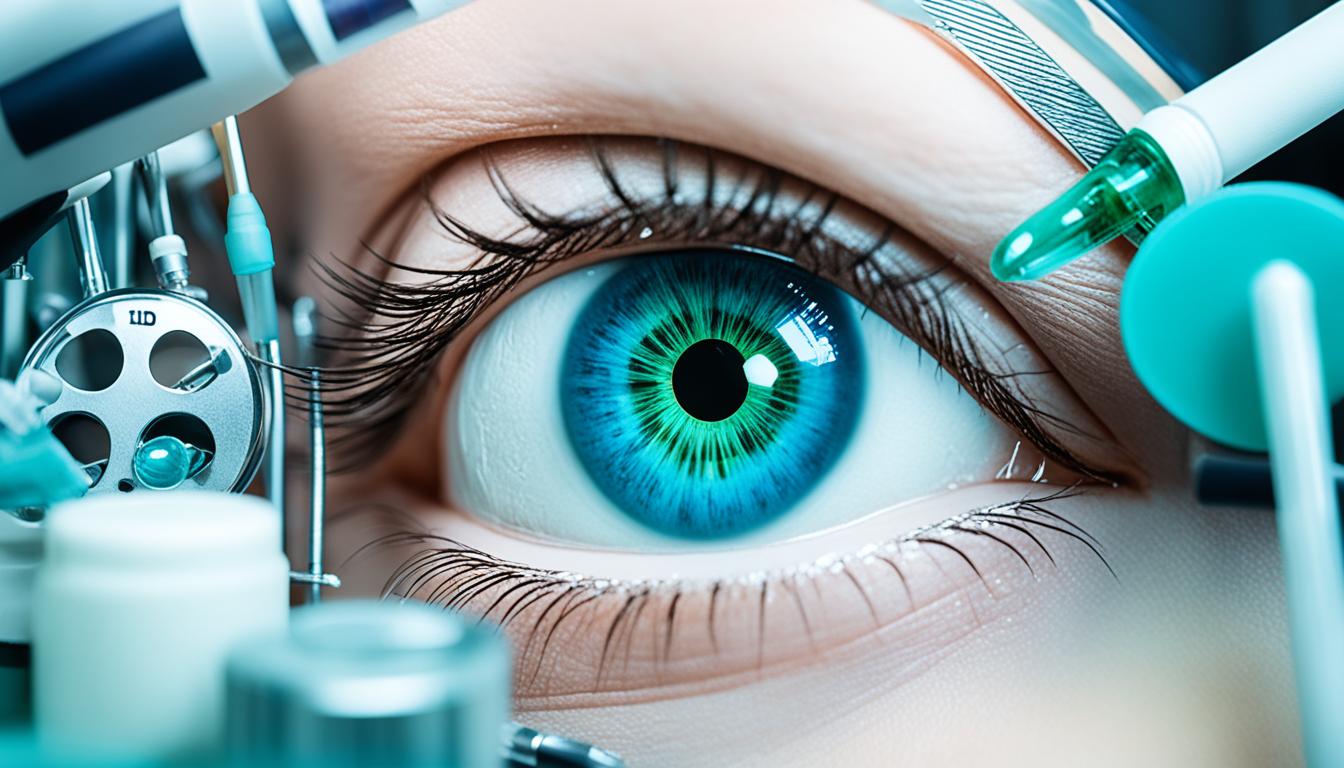Horner syndrome affects one side of the face and eye. It causes the pupil to shrink, the eyelid to droop, and less sweat on that side. These symptoms can harm sight and life quality.
The condition’s reasons can be several, from strokes to unknown causes. Sometimes, finding the exact cause is hard, which makes treating it tough.
Doctors find Horner syndrome through a detailed check-up. They look at how the pupils and sweat glands work. They use tests to rule out underlying issues like tumors or injuries.
Key Takeaways:
- Horner syndrome affects the face and eye on one side of the body, leading to symptoms such as decreased pupil size, drooping eyelid, and decreased sweating.
- Underlying causes may include medical conditions like stroke, tumor, or spinal cord injury, or the cause may be unknown.
- Diagnosing Horner syndrome involves a thorough physical examination, pharmacologic testing, and imaging techniques.
- Treatment primarily focuses on addressing the underlying cause rather than targeting Horner syndrome directly.
- Early medical evaluation is crucial for proper diagnosis and management of Horner syndrome.
Recognizing Horner Syndrome: Key Signs and Symptoms
Horner syndrome shows signs on one side of the face. It’s important to know these signs. They help find it early and treat it right.
The main signs of Horner syndrome are:
- A small pupil in the affected eye.
- The eyes have different-sized pupils.
- The pupil in the affected eye doesn’t get bigger in dark places.
- The affected eyelid droops.
- The lower eyelid might look a bit higher on the affected side.
- The eye on the affected side looks a bit sunken.
- Less sweating on the skin of the affected side.
Children with Horner syndrome might also have a lighter-colored iris in the affected eye. Their skin on that side might look different too.
It’s key to spot these Horner syndrome signs early. This way, it can be checked by a doctor fast. If you or someone has these signs, see a healthcare provider for help.
Understanding the Causes and Diagnosis of Horner Syndrome
Horner syndrome happens when a special pathway in the body is damaged. This pathway is part of the sympathetic nervous system. It controls some body functions. There are three types of nerve cells in this pathway.
The causes of Horner syndrome differ. They are often linked to medical issues. Some reasons include stroke, tumors, and neck injuries. Lung cancer and infections can also cause it.
Sometimes, doctors can’t find the exact cause of Horner syndrome. This is called idiopathic Horner syndrome.
Diagnosing Horner syndrome requires a detailed checkup. It includes:
- A careful physical exam to spot key symptoms like a small pupil, a droopy eyelid, and less sweating on one side of the face.
- Special eye drops are used to see how the pupil reacts to certain medications.
- Imaging tests like MRI or CT scans to look for any issues causing Horner syndrome.
Through a complete checkup and these tests, doctors can confirm Horner syndrome. They can also find out what’s causing it or any other issues. This helps in planning the best treatment.
Moving Forward: Treatment Options and Outlook
There isn’t a direct treatment for Horner syndrome on its own. Instead, doctors focus on treating what’s causing it. This could mean removing tumors or lesions through surgery, using radiation or chemotherapy for cancer.
In some cases, treating the main condition can make Horner syndrome better or even go away. If you notice any of its symptoms, see a doctor right away. This condition might point to something more severe. With a correct diagnosis and treatment plan, people with Horner syndrome can improve their symptoms and live better.

